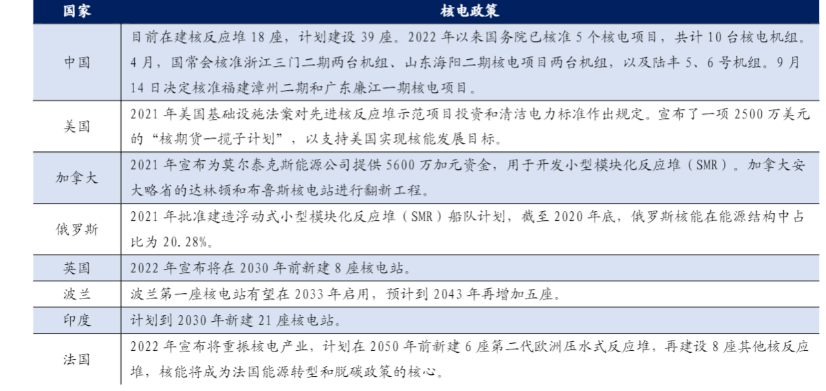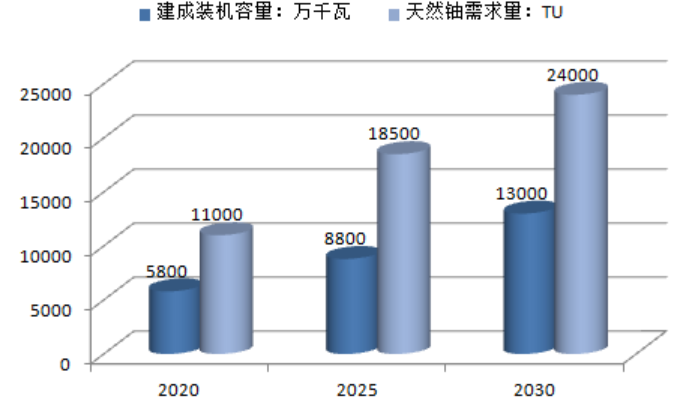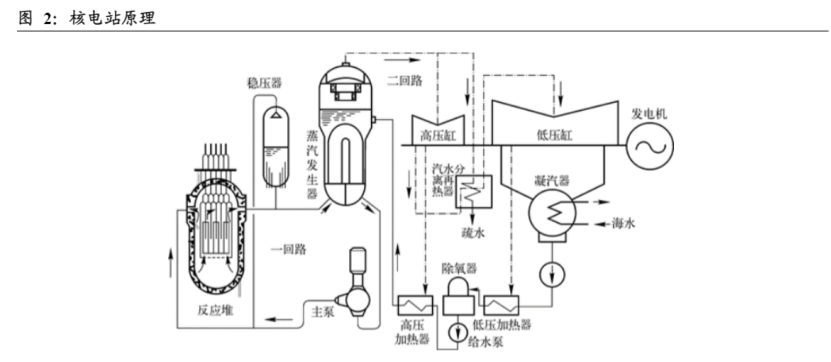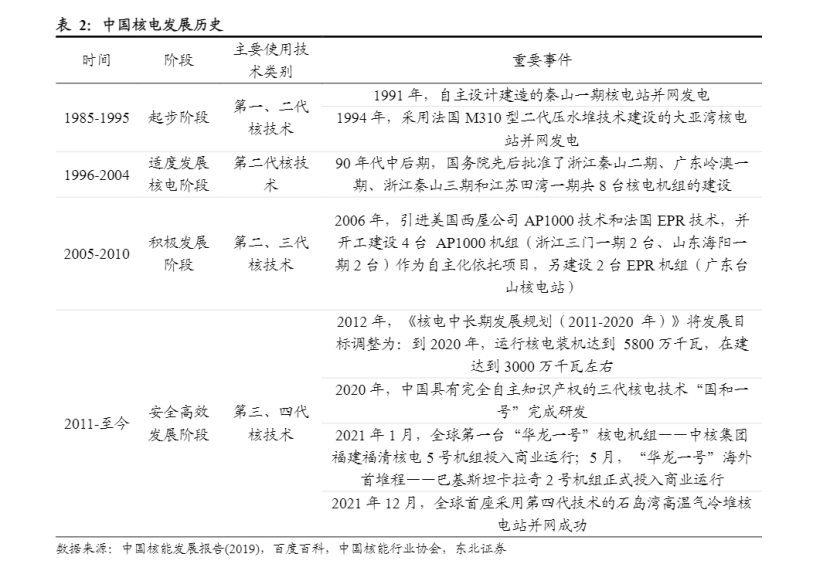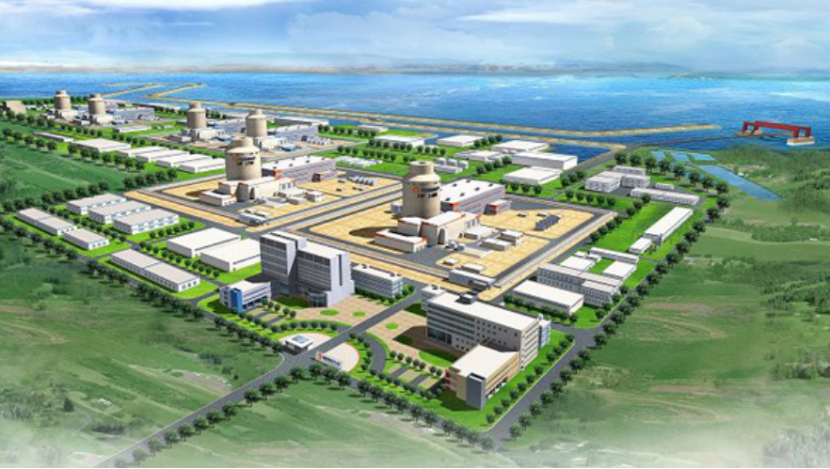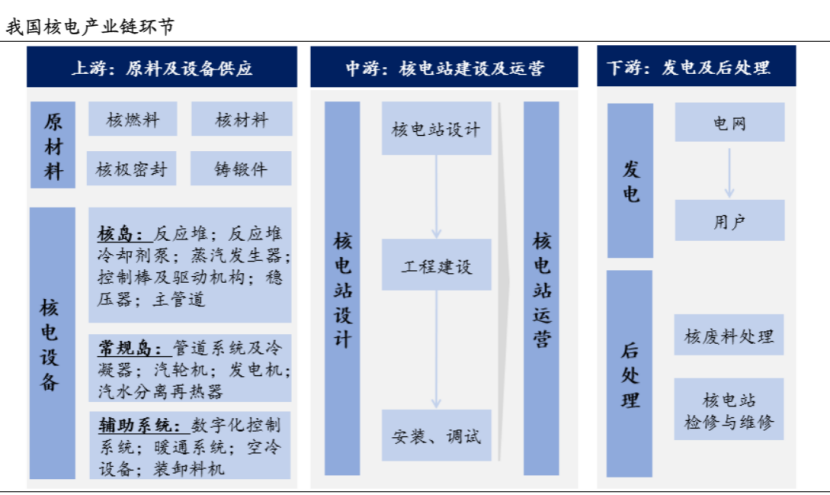The Russia-Ukraine conflict brings not only a European energy crisis, but also a return to nuclear energy.
Data show that in 2021, the global nuclear power installed capacity will increase by 8.836 million KW, a year-on-year increase of 97.54% . As a high-quality base-load energy, nuclear power has shown a trend of warming up and increasing capacity.
On the first day of 2023, the Russian Nuclear Power Group announced that in 2022, Russian nuclear power plants will set a new record , with a power generation of more than 223.371 billion kwh, and in 2021, the power generation will exceed 222.436 billion kwh. Nuclear power currently accounts for about 20 percent of Russia’s total power generation.
The world is beginning to re-examine the value of nuclear power in a chess game where energy security becomes increasingly important.
01 Countries adjust policies and nuclear power returns to the world stage
Since 2022, countries and regions around the world have successively adjusted their nuclear power policies and accelerated the construction of nuclear power plants. Even some countries that have abandoned nuclear power have reconsidered nuclear power.
Due to potential safety hazards such as nuclear reactor waste disposal and nuclear leaks, countries such as Germany, Switzerland, and South Korea once abandoned the use of nuclear power. However, under pressure from climate change and energy shortages, they had to re-adopt active nuclear power development policies.
The United Kingdom announced that it will build 8 new nuclear power plants by 2030 and provide 25% of its electricity by 2050. South Korea is starting to restart nuclear power, starting new construction and extending the life of existing nuclear power plants. It is hoped that nuclear power will account for 30% of the total power generation. The nuclear power plant in Ontario, Canada is also being refurbished . At the same time, it also announced that it will provide 56 million for Mortex Energy. Canadian dollar funding for the development of Small Modular Reactors (SMRs). Poland’s first nuclear power plant is expected to be commissioned in 2033, with five more expected by 2043 . The Netherlands also plans to add two new nuclear power plants.
Organized by Energy Chain Research Institute
Even Germany, which has long opposed the development of nuclear power, has extended the service life of the remaining three nuclear power plants to 2023. Because Germany’s energy supply is highly dependent on imports, and the starving Ukraine conflict has the greatest impact. EIA data show that Germany’s energy self-sufficiency rate is only 32.9%.
After Japan experienced the Fukushima nuclear disaster, it once kept quiet about nuclear power. In particular, people almost talked about “nuclear” and turned pale. It accounted for one-third of Japan’s nuclear power, which directly dropped to 10%.
Entering 2023, Japan’s power shortage situation is even more out of control, forcing the government to propose winter power saving requirements for the first time in 7 years, requiring the public to adopt a series of measures such as turning off unnecessary lighting, wearing more clothes indoors, and using thicker curtains. electrical measures. In Kawasaki City, Japan, Lawson Convenience Store also launched an environmentally friendly store that can save 40% of electricity.
In response to the energy crisis and tight power supply, the Prime Minister of Japan also stated that he is open to new nuclear energy projects. In December last year, he approved a plan to resume the use of nuclear energy. The plan extends the life of nuclear reactors to more than 60 years and calls for the development of more advanced reactors to replace those decommissioned.
An energy crisis brings nuclear power back to the center of the energy stage.
There was also a big event at the end of last year that rekindled the global enthusiasm for nuclear energy. The U.S. Department of Energy announced in a high-profile manner that its nuclear fusion experimental device has achieved a major breakthrough that “the output energy is greater than the input energy”. Although the result may only be enough to boil 20 pots of water, and commercialization is thousands of miles away, it still inspires new hopes for solving energy problems around the world.
Facing the ultimate energy source for sustainable development of mankind in the future, no country is willing to be absent.
Estimation of China’s nuclear power installed capacity and uranium demand
The World Nuclear Association has predicted that global nuclear fuel uranium demand will rise from 162 million pounds in 2021 to 206 million pounds in 2030, and further climb to 292 million pounds by 2040 .
While the attitudes of major economies in the world are vacillating towards nuclear power, China’s nuclear power has been firmly moving forward on the road of technology research and development and market development.
Since the beginning of this year, China has approved 5 nuclear power projects and 10 nuclear power units, the most in the past 14 years. According to the “14th Five-Year Plan and 2035 Long-term Target Outline”, by 2025, China’s nuclear power operating installed capacity will reach 70 million kilowatts.
Moreover, it is estimated that from 2022 to 2025, China will maintain the approval rhythm of 6-8 nuclear power units per year , which will greatly accelerate. By 2035, China’s nuclear power will account for 10% of total power generation, doubling from 2021.
02 Although the scenery is good, nuclear power is a base load energy and cannot be absent
Compared with wind power, which has been pursued for a long time, the development speed of nuclear power is much slower.
2022 will be a big year for the development of renewable energy such as photovoltaics and wind power in the world. According to the International Energy Agency’s “World Energy Outlook 2022” report, the proportion of photovoltaic and wind power generation will increase from 10% in 2021 to 40% in 2030, and will reach 70% in 2050.
This year, the installed capacity of photovoltaic power generation in China will reach 490 million kilowatts, surpassing hydropower just a step away, and even the installed capacity of wind power is expected to reach 430 million kilowatts.
Although it is difficult to be so “beautiful” and maintain a growth rate of more than double digits, nuclear power has its own fundamentals.
Nuclear power is a low-carbon, high-efficiency clean energy, and its carbon dioxide emission is 12g/kWh, which is close to that of wind energy. Moreover, the utilization efficiency of nuclear power is the highest among all power generation methods. From 2018 to 2021, the average annual utilization hours of nuclear power in China will be more than 7,000 hours, which is much higher than the utilization hours of wind and wind power generation that do not exceed 3,000 hours. Moreover, nuclear power is not affected by seasons and the environment, and its economic efficiency is slightly worse than that of hydropower, but fortunately, it does not choose geographical location.
Looking at the history of nuclear power development in the world, since the 1950s, nuclear power has generally experienced five stages of experimental demonstration, high-speed promotion, slow development, gradual recovery, and cautious development . Considering the current warming trend, global nuclear power is entering a new stage of development.
Behind every drop in temperature comes the curse on the top of the head-nuclear safety accident.
For example, after the 1980s, affected by the Three Mile Island nuclear accident in the United States in 1979 and the Chernobyl accident in the former Soviet Union in 1986, nuclear power construction was “frozen” in some countries; It has poured cold water on the world’s nuclear power during the recovery period. Germany, Switzerland, etc. have successively put forward the idea of ”nuclear abolition”, and Japan once put forward the attitude of “zero nuclear power”.
However, with the technological iteration and progress of nuclear power, every accident has played the role of a catalyst.
In the 1980s, nuclear power suppliers in the United States and Europe, together with relevant agencies, successively launched the “Advanced Light Water Reactor User Requirements Document” (URD) and “European User Requirements for Light Water Reactor Nuclear Power Plants” (EUR), proposing to strengthen prevention and With new requirements such as measures to mitigate severe accidents and improvement of human factors, the concept of third-generation nuclear technology has begun to take shape. In 2016, the fourth-generation nuclear technology represented by high-temperature gas-cooled reactors emerged. After this generation, the efficiency of nuclear fuel use has been improved, the half-life of nuclear waste has been reduced, and the safety of nuclear energy use has been improved.
Safety concerns are inseparable from how nuclear energy works.
There are four ways of nuclear reaction: nuclear fission, nuclear fusion, particle bombardment and nuclear decay, among which nuclear fission chain reaction is the principle of nuclear power generation. After absorbing a neutron, the nucleus of an atom with a larger mass (uranium) will split into multiple nuclei with a smaller mass, and at the same time release two or three neutrons and huge energy, while the newly generated neutrons continue to participate Nuclear fission continues to go on, and at the same time it continues to generate new energy .
In essence, it is the energy conversion process of nuclear energy-thermal energy-mechanical energy-electric energy.
Nuclear reactors have a variety of structural forms, and can be divided into different types of nuclear reactors according to the neutron energy distribution form and the type of coolant. Including thermal neutron piles and fast neutron piles. According to the classification of coolant, it can be divided into gas-cooled reactor, liquid-cooled reactor and liquid metal cooled reactor. Gas-cooled reactors include carbon dioxide cooling and helium cooling. Liquid-cooled reactors mainly include light water-cooled pressurized water reactors and boiling water reactors, and heavy water-cooled heavy water reactors; liquid metal-cooled reactors mainly include reactors cooled by sodium and sodium-potassium alloys.
From an international perspective, countries such as South Korea, South Africa, Russia, France, Ukraine, Finland, Belgium, and the United States are more active in nuclear power. Nuclear energy has made a huge contribution to carbon emission reduction in Western developed countries such as Europe and the United States.
In the European energy crisis, although France is the second largest energy consumer in Europe, the extent of its impact is much lower than that of Germany. The reason is that, unlike Germany’s “nuclear abandonment”, France is the world’s second largest producer of nuclear energy after the United States. In primary energy consumption, nuclear energy accounts for a relatively high proportion, of which 36.5% in 2021. But French nuclear power also has weaknesses. Most of its 56 nuclear reactors were built 50 years ago, and there is a problem of serious aging equipment. In recent years, almost half have closed for maintenance.
French President Macron has said that France will start building 14 new nuclear power units starting in 2028 and will no longer shut down existing nuclear reactors.
03 From introduction to technology leadership, China’s nuclear power triple jump
In terms of utilizing nuclear energy, China has traveled a long and tortuous road.
It took nearly 30 years from the successful detonation of the first atomic bomb to the commercial use of the first nuclear power plant. It was not until 1984, when Qinshan Nuclear Power Phase I started construction and was connected to the grid in 1991, that China truly ended its history of no nuclear power.
Like photovoltaics, new energy vehicles, hydrogen energy and other industries, the development of China’s nuclear power technology has gone through the process of introduction, digestion and absorption, localization and replacement, and technology leadership, completing the “triple jump”.
Beginning in September 2004, the state introduced the AP1000 technology of Westinghouse Corporation of the United States through public bidding, and started construction of 4 AP1000 units, including 2 units in the first phase of Sanmen, Zhejiang, and 2 units in the first phase of Haiyang, Shandong, as The independent experimental project has started the process of independent third-generation nuclear energy technology in my country.
While building the unit, through the way of technology sub-licensing, more than 70 units of 15 groups in the equipment manufacturing field such as Shanghai Electric , Dongfang Electric, Harbin Electric, and China First Heavy Industry have been issued to nuclear power design companies such as China National Nuclear Corporation and China Guangdong Nuclear Power Group. Sub-licensing, and then the CAP1400 third-generation nuclear power autonomy achievement.
The famous “Hualong One” is the integration and innovation of ACP1000 and ACPR1000+ technologies.
CAP1400 concept map of the whole plant Source: Shanghai Nuclear Engineering Research and Design Institute
At present, “Hualong One” has built 4 units around the world. On November 27, 2020, Hualong One’s world’s first reactor, China National Nuclear Corporation’s Fuqing Nuclear Power Unit 5, was successfully connected to the grid for the first time, and it was put into operation on January 30, 2021. On May 20, 2021, the first overseas reactor project of “Hualong One” – Karachi Unit 2 in Pakistan was officially put into commercial operation . On January 1, 2022, CNNC Fuqing Nuclear Power Unit 6 was successfully connected to the grid for the first time. On April 18, 2022, unit 3 in Karachi, Pakistan passed the acceptance inspection. So far, the two units of Hualong One’s first overseas project have been fully completed and put into operation.
If the third generation is still running side by side, China has completely entered the leading ranks in the fourth generation of nuclear power technology.
The fourth-generation nuclear power plants have several notable features. Take high-temperature gas-cooled reactors as an example. In terms of safety, spherical fuel elements are used, and the core of granular fuel elements is covered with all-ceramic shielding materials . The melting points of graphite and carbon blocks, the core structural materials, are in the Above 3000°C , even under the most serious accident conditions, there will be no core meltdown accident; the core outlet temperature is high, which can meet the needs of most heat sources; the power generation efficiency can reach 40-47% , which is comparable to traditional pressurized water Compared with the power generation efficiency of the stack of 33%, the performance is greatly improved.
As of July 2022, there are 54 nuclear power units in operation in mainland China, with an installed capacity of about 52,150 MW, and 21 units under construction, with a total installed capacity of 23,511 MW. Among them, 10 of the 21 units under construction are the third-generation “Hualong One”, all of which are located in coastal areas.
However, there are only two fourth-generation high-temperature gas-cooled reactors in operation in the world, located in Rongcheng City, Shandong Province, China, and Oarai Town, Ibaraki Prefecture, Japan.
The 2021 “Government Work Report” clearly stated that “under the premise of ensuring safety, nuclear power will be actively and orderly developed.” This is the first time in the past ten years that China has used the word “positive” to express its attitude towards nuclear power .
Under the guidance of the policy of “actively, safely and orderly development of nuclear power” determined by the state, China’s nuclear power generation has jumped to the second place in the world, and the scale of installed capacity under construction ranks first in the world .
Northeast Securities predicts that China’s nuclear power market is expected to exceed 300 billion yuan in 2025.
“China’s Nuclear Energy Annual Development and Prospects (2020)” mentioned that it is estimated that by 2025, my country’s installed nuclear power capacity in operation will reach 70 million kilowatts, and the installed capacity of nuclear power under construction will reach 30 million kilowatts. The new installed capacity is 7338 MW. Based on the construction cost of 12,000-20,000 yuan per kilowatt, the average annual utilization hours of 7,800, and the on-grid electricity price of 0.39 yuan/kWh, it is conservatively estimated in 2025 that the market space of China’s nuclear power industry will exceed 300 billion yuan.
04 Nuclear power goes overseas, a new window of opportunity for the Belt and Road Initiative
Starting from the capital Jakarta in the north and linking to the famous city of Bandung in West Java in the south, the 142-kilometer Jakarta-Bandung high -speed railway is the first high-speed railway in Indonesia and even the entire Southeast Asia region.
Just as China’s high-speed rail goes abroad along the Belt and Road, China’s nuclear power is also being replicated along this path.
In recent years, my country’s self-developed third-generation nuclear power technology “Hualong One” has already stepped out. In addition to the Pakistan K2 and K3 projects that have been completed and put into operation, in February last year, the UK also confirmed the use of “Hualong One” for the construction of the Bradwell B-class nuclear power plant.
From a global perspective, currently only the United States, Russia, France, China, South Korea, and Japan have the strength to export third-generation nuclear power units. In comparison, China has obvious advantages in terms of technical level and unit cost. In particular, the high-temperature gas-cooled reactor technology among the fourth-generation technologies ranks among the top in the world.
According to China Nuclear Power Grid, five of the top ten nuclear power plants in the world are located in China .
In terms of cost, it is the same as lithium battery. China has the most competitive battery pack cost, only 127 US dollars per kilowatt-hour ($127/kWh), the United States and Europe are 24% and 33% higher than China, respectively, and it is transmitted to the whole vehicle link, which has obvious manufacturing and price competitiveness.
So is nuclear power.
Taking China’s third-generation nuclear power unit “Hualong No. 1” as an example, the construction cost is about 16,000 yuan/kW, which is 20%-30% lower than that of foreign countries , and the cost will further decrease with the subsequent batch construction and technological improvement.
At present, CNNC has reached cooperation intentions with 20 countries including Argentina, the United Kingdom, and Pakistan, and CGN has reached cooperation intentions with the Czech Republic, Romania, and France. Moreover, CNNC and CGNPC are also working with their partners to develop nuclear energy markets in Europe, Central Asia, and Southeast Asia.
Statistics show that before 2030, among the countries along the Belt and Road, more than 20 countries and regions plan to develop nuclear power, and 107 new nuclear power units will be built, with a total of 115 million kilowatts of new nuclear power installed capacity. Except for the Chinese market, these countries and regions accounted for 81.4% of the world’s nuclear power market growth.
Moreover, the nuclear power construction industry chain is long, the investment amount is high, and the spillover effect is more obvious.
According to the National Energy Administration, every exported nuclear power unit can drive the sales of more than 60,000 sets of equipment. More than 200 companies in a chain will participate, creating about 150,000 job opportunities and driving more than 5,300 companies in the upstream and downstream industrial chains.
05 Storage trend: small piles become a battleground, nuclear energy + promising
The investment of a single large-scale nuclear power unit is about 20 billion to 30 billion yuan. It has the typical characteristics of heavy capital and technology investment, and it also involves major national security. The construction period is more than 5 years, and private enterprises rarely get involved.
The entire nuclear power industry chain, from the upstream nuclear fuel cycle to midstream equipment manufacturing and downstream nuclear power plant operations, is dominated by state-owned enterprises.
Source: Guohai Securities Research Institute
For example, in the supply of nuclear island equipment, Dongfang Electric, Shanghai Electric, China First Heavy Industry Group, Harbin Electric Group, etc. occupy an important position, while private companies only supply control rods, pipes, welding materials, nuclear-grade valves, seals, switches, supporting motors, Subdivided fields such as cables are involved, such as Jiangsu Shentong, Jiadian, Jiuli Special Materials, Jingye Intelligent , etc.
Compared with large-scale nuclear power plants that are expensive and have a long construction period, multifunctional small modular nuclear reactors (“small reactors” for short) below 300,000 kilowatts are cheaper, easier to build, safer and more flexible, and are considered more suitable for urban heating, heating scene.
Heating has always been the largest terminal energy consumption field in the world. In the past, the main energy in this site was traditional fossil energy such as coal, oil, and natural gas.
Under the low-carbonization of energy, small piles are very useful. The advantages are also particularly obvious. First, the initial investment of SMR is low, the construction period is short, and the site selection is more flexible, and it can be flexibly designed and configured according to user needs; High core loading capacity, good safety .
For example, NuScale in the United States, a multi-module small-scale light-water-cooled reactor, is designed to replace old thermal power plants. Based on the total power of 924,000 kilowatts, the cost is only 2.519 billion US dollars. Russia’s offshore floating nuclear power plant KIT-40S and South Korea’s SMART have applications in fields such as electricity, thermal energy, and seawater desalination.
In Haiyang, Shandong, China, State Power Investment Corporation’s “Nuanhe No. 1” nuclear energy heating project has begun operation. This is also the largest nuclear energy heating project in China, covering an urban area of nearly 5 million square meters and serving 200,000 surrounding residents. In Dalian, Liaoning, the nuclear energy heating demonstration project of Hongyanhe Nuclear Power Plant was put into operation. This is the first nuclear energy heating project in Northeast China, with a planned heating area of 242,400 square meters. In Haiyan, Zhejiang, the China National Nuclear Corporation Qinshan Nuclear Power Heating Demonstration Project is under construction. After it is fully completed and put into operation at the end of the “14th Five-Year Plan”, it can meet the heating demand of 4 million square meters and reduce the standard coal consumption by about 24,600 tons per year.
At the present stage, small reactor technology is adopted in China, and the in-situ replacement of small thermal power technology is basically mature, with promising prospects. Applicable reactor types include ACP100 (Linglong No. 1), HTR-PM-200, etc.
In addition, in view of the serious shortage of water resources in northern and some coastal areas, nuclear energy can also play a role in the field of seawater desalination, and high-temperature gas-cooled reactors also have advantages in the field of hydrogen production.
Moreover, for large-scale wind and solar bases, if they are equipped with nuclear power, as a stable supporting power source, not only will the long-distance outbound transmission channels not run at no-load or low-load conditions, but it can also make up for the intermittent and volatile shortcomings of wind and solar power generation.
Although nuclear energy heating technology is mature and has broad application prospects in the field of low-carbon heating, public concerns about the safety of nuclear energy are likely to breed rejection and resistance. Price acceptance is also a challenge.
References
[1] Sealand Securities “The global nuclear power industry is picking up, and nuclear power going overseas is expected to accelerate”, November 13, 2022
[2] Huaxi Securities , “Europe’s Energy Dilemma: The Tilt of the Impossible Triangle”, September 18, 2022
[3] Northeast Securities “Driven by Dual Carbon Goals, Nuclear Energy Can Be Expected in the Future”, August 11, 2022
This article comes from the WeChat public account “Energy Chain Research Institute” (ID:NEWLINK_RESEARCH) , author: Energy Chain Research Institute, 36 Krypton is authorized to publish.
media reports
36Kr Sina Fast Technology Sohu Sina Sohu Technology
related events
- An energy crisis activates the global trillion-dollar nuclear power market2023-01-11
- State Power Investment Corporation: Units 1 and 2 of Guangdong Lianjiang Nuclear Power Plant have been approved by the state2022-09-14
- The United States included Chinese nuclear power companies in the entity list, CGN responded: the impact is controllable2019-08-15
- “Hualong No. 1” nuclear turbine generator has been completed and reached the international advanced level2017-11-08
This article is transferred from: https://readhub.cn/topic/8mtNr6HTacH
This site is only for collection, and the copyright belongs to the original author.
